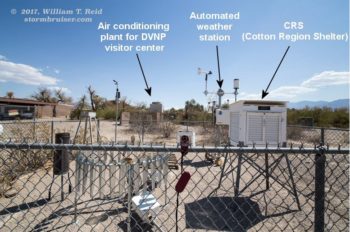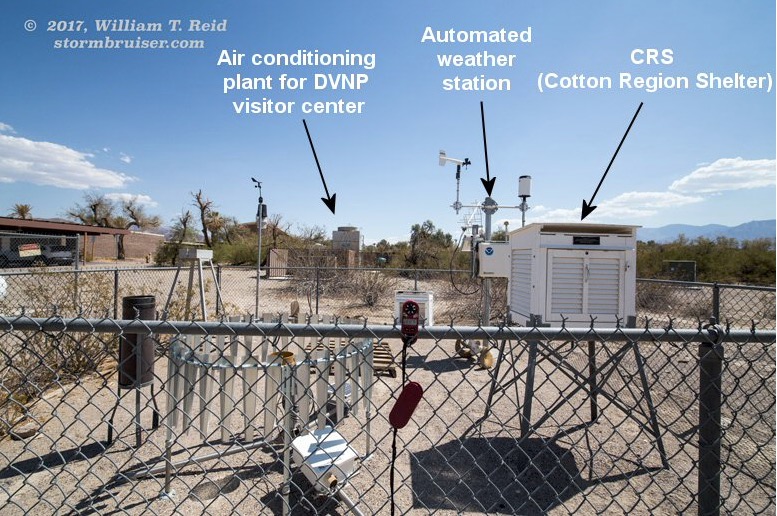
A veteran meteorologist claims to have evidence the hottest temperature ever recorded in the entire world at Death Valley was probably man-made, but not in the way one would think.
It turns out parked RVs and solar panels may have artificially driven up temperature readings at nearby, poorly cited thermometers used by government officials at Death Valley National Park in California, according to meteorologist and science blogger Anthony Watts.
“First, yes there was a weather pattern in July that made much of the southwest hotter than usual,” Watts wrote Thursday on his blog Watts Up With That.
The National Weather Service tentatively reported Wednesday that Death Valley hit its hottest month ever, averaging a whopping 108.1 degrees Fahrenheit in July. If true it would be the hottest monthly average recorded in the world.
“But, what really caused the increased average high temperature to be a record setter? The answer is simple; the environment around the weather station used to measure the official temperature changed dramatically in the past few years,” Watts wrote.
Watts actually took photos of Death Valley’s temperature sensors during 2008 and compared them to more recent photos and Google Earth satellite images. Watts also looked at federal logs tracking changes at weather station sites.
What he found was “new infrastructure, such as solar panels, parking lots, and air conditioning heat exchanger plants.”
RVs, solar panels, and air conditioners generate heat, which can influence temperature readings at nearby weather stations that aren’t cited correctly. Parking lots and other artificial surfaces can also raise local temperature readings by retaining heat during the day and shedding it at night.
“None of these things were there when the original weather station was placed at Furnace Creek,” Watts wrote.

“Arguably, these land-use changes all have a cumulative effect on the temperature measured in Death Valley,” Watts wrote. “Because the environment has changed so much, its folly to think of it as a metric for any climate change, because the forces from the land-use changes are far greater than any posited ‘climate change.’”
In fact, U.K. meteorologists recently rejected a record-high temperature reading at Motherwell, Scotland, because an ice cream truck had idled nearby with its engine on, possibly contaminating the reading.
Watts has spent years scrutinizing the siting and technical aspects of weather stations across the world to see if their readings are being contaminated by artificial heat sources. Watts co-authored a recent study with climate scientist John Christy and Texas state climatologist John Nielsen-Gammon on how poorly sited weather stations can impact climate monitoring.
When it comes to long-term climate monitoring, meteorologists are becoming more conscious about station siting. The National Oceanic and Atmospheric Administration (NOAA) even started a system of about 100 state-of-the-art climate monitoring stations sited in areas not likely to be developed.
Watts also compared the Death Valley visitor site thermometers to the nearby NOAA station that’s part of the new USCRN network, which is sited about a mile away in the desert, far from artificial heat sources.
The difference between the alleged record reading at Death Valley and Stovepipe Wells for the month of July was 1.5 degrees Fahrenheit.
“A 1.5-degree difference in the monthly average, and not a record-breaker,” Watts wrote. “The old record for the monthly average was 107.4 degrees according to the NWS official quoted in the AP article.”
Read more at Daily Caller
















